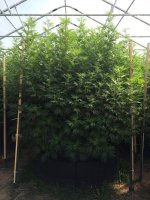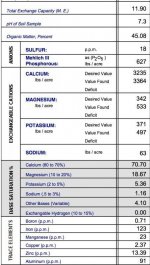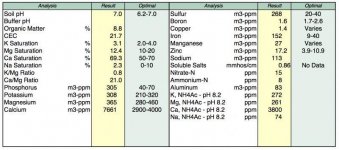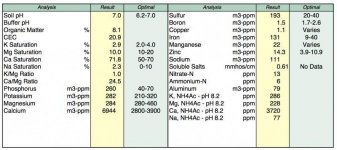Foots,
This phosphorus is being reported as pounds/acre P2O5. You need to divide by 2 to get to ppms and then divide by 2.29 to get to ppms of P. I love Logan labs...
http://www.agroservicesinternational.com/Education/Fert6.html
His water is scarey. More bicarbonates than calcium. Going to suck up calcium in his soil like a magnet and guess what all that calcium that is being reported is? Available, with that pH water?
And look how good he is doing! Imagine dialing it in using corrected data.
How did Captain Kirk say it? Where no man has gone before..... thanks again PGA!
This phosphorus is being reported as pounds/acre P2O5. You need to divide by 2 to get to ppms and then divide by 2.29 to get to ppms of P. I love Logan labs...
http://www.agroservicesinternational.com/Education/Fert6.html
His water is scarey. More bicarbonates than calcium. Going to suck up calcium in his soil like a magnet and guess what all that calcium that is being reported is? Available, with that pH water?
And look how good he is doing! Imagine dialing it in using corrected data.
How did Captain Kirk say it? Where no man has gone before..... thanks again PGA!







